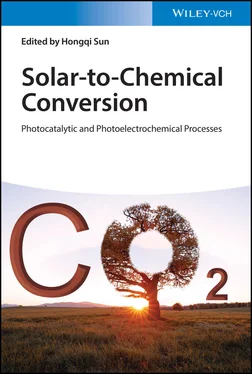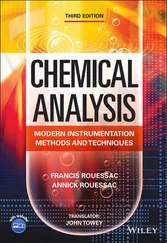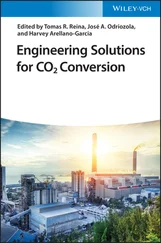6 Chapter 7Figure 7.1 PEC water splitting by n‐type TiO 2photoanode for oxygen evolution reaction (OER) and Pt cathode for hydrogen evolution reaction (HER). The TiO 2with band‐gap energy ( E g) of 3.0 eV is photoexcited under ultraviolet light irradiation. External voltage (Δ E app) is applied between the electrodes to induce water photoelectrolysis.Figure 7.2 Current–potential curves for conventional water electrolysis in the dark. Over potentials ( η ) are required for HER and OER over each electrocatalyst electrode ( η HER+ η OER).Figure 7.3 Current–potential curves for water photoelectrolysis using photoanodes for OER and a cathode for HER at the current density ( j ) of 2 mA cm −2. (a) Unbiased PEC water splitting and (b) PEC water splitting with externally applied voltage (Δ E app). The Δ E photois the shift of the potential by using photoanodes in comparison with (c) anode electrocatalyst for OER. The absolute value of the current is equal between the series‐connected electrodes.Figure 7.4 (a) Current–potential curves of WO 3photoanode in 0.1 mol l −1Na 2SO 4(pH = 7) with 10 vol% methanol under UV irradiation (monochromatic light, λ = 365 nm) with different intensities of incident light. The light intensity ( I 0) was controlled by using a neutral density filter. (b) Effect of the I 0on the photocurrent density ( j photo) of the WO 3photoanode in the linear sweep voltammetry. The j photowas linearly increased with I 0at each applied potential.Figure 7.5 (a) Flat band state and (b) band bending state of n‐type semiconductor. The recombination of the photoexcited e −and h +pair easily occurs in the flat band state. In contrast, the e −and h +pair is efficiently separated in the space charge layer (SCL). In the absence of surface states, the potential drop in the SCL (Δ φ ) is linear to the anodic shift of the applied potential from the flat band potential ( E fb).Figure 7.6 The pH dependence of the electrode potentials at 25 °C. The potentials of SHE and Ag/AgCl reference electrode are constant, but the potentials of RHE and the potentials for HER and OER are linearly increased by an increase in pH value with a slope of 59 mV (ln 10 × RT / F ) at 25 °C.Figure 7.7 IPCE action spectra of rutile and anatase TiO 2electrodes in 0.2 mol l −1Na 2SO 4with phosphate buffer (pH = 7) at 0.9 V vs. RHE. The inset shows their diffuse reflectance UV–vis spectra using Kubelka–Munk function, F( R ). Source: From Amano et al. [21]. © 2018 The Electrochemical Society.Figure 7.8 Mott–Schottky plots of WO 3electrode in 0.1 mol l −1H 2SO 4(pH = 1) in the dark to estimate the flat band potential ( E fb) and the donor density ( N D). The capacitance of the space charge layer ( C sc) was measured at 1 kHz with a sinusoidal amplitude of 10 mV in the dark. The inset shows the SEM image of the WO 3electrode surface. Source: Adapted with permission Amano et al. [22]. Copyright 2011, Springer‐Verlag.Figure 7.9 Linear sweep voltammograms of the WO 3electrode for (a) water oxidation in 0.1 mol l −1H 2SO 4and (b) methanol oxidation in the solution with 10 vol% methanol under photoirradiation (solid j – E curves) and in the dark (dashed j – E curves). The applied potential where photocurrent response starts is denoted as E onset. The E fbis the value measured in Figure 7.8. Source: Based on Amano et al. [22].Figure 7.10 Band diagrams of n‐type semiconductors for PEC oxygen evolution: SrTiO 3, rutile TiO 2, monoclinic WO 3, α‐Fe 2O 3(hematite), monoclinic scheelite‐type BiVO 4(clinobisvanite) [28], and TaON [29] with E °(H +/H 2) and E °(O 2/H 2O). Here, the reported E fbis considered as the conduction band (CB) minimum, although the CB minimum is more negative than E fbby 0.1–0.3 eV. The valence band (VB) maximum is determined from the CB minimum and the optical E g.Figure 7.11 Pourbaix diagram, which is a potential–pH equilibrium diagram, for (a) tungsten–water system and (b) iron–water system at 25 °C. The molar concentration of WO 4 2−, Fe 2+, and Fe 3+is 10 −6mol l −1. The dashed lines show the potentials of HER and OER relative to pH value in water. Source: From Pourbaix [31]. © 1974, NACE.Figure 7.12 Schematic illustrations of photoexcited electron transport in photoanodes composed of (a) nanocrystalline particles with grain boundaries and (b) single‐crystalline materials with anisotropic nanostructures. Source: From Amano et al. [35]. © 2011 The Electrochemical Society.Figure 7.13 Crystal structure of WO 3·H 2O and cross‐sectional sideview SEM image of vertically aligned WO 3flakes deposited on transparent conductive oxide (TCO) glass substrate for PEC water oxidation under visible‐light irradiation. The seed layer, which is WO 3nanoparticles, is essential for heterogeneous nucleation of WO 3·H 2O flakes. The WO 3·H 2O flakes with two‐dimensional nanostructure were converted to monoclinic WO 3by heat treatment. Source: From Amano et al. [36]. © 2010, RCS.Figure 7.14 Current–potential curves of (a) vertically aligned WO 3flakes (blue dashed) and (b) horizontally stacked WO 3flakes (black solid) deposited on TCO glass substrate in 0.1 mol l −1Na 2SO 4(pH = 7) under visible‐light irradiation ( λ > 400 nm). (A) Back‐side and (B) front‐side illumination were performed through the TCO glass substrate and the WO 3layer, respectively. Chopped illumination was used to show the transient photocurrent response for water oxidation. Source: Based on Amano et al. [35].Figure 7.15 (a) Pictures of the thermally oxidized TiO 2films (Ti plate calcined in air at 900 °C for two hours) and the films treated in H 2stream at different temperatures (300–800 °C). (b) Effect of H 2treatment temperature on the sheet resistance ( R ) and the donor density ( N D) of TiO 2films. The R was measured by a four‐point probe. The N Dwas measured by the Mott–Schottky analysis. (c) Effect of H 2treatment temperature on the j photoof TiO 2films in 0.1 mol l −1H 2SO 4(pH = 1). The j photofor water oxidation was obtained in LSV measurement at 0.87 V vs. RHE under UV irradiation ( λ > 300 nm). Source: Adapted with permission Amano et al. [38]. Copyright 2016, American Chemical Society.Figure 7.16 Schematic illustration of the PEC water oxidation process at the photoanode with cocatalyst layer: (a) conductive substrate, (b) n‐type semiconductor as a photoabsorber, (c) cocatalyst layer for OER, and (d) aqueous electrolyte solution. The number indicates the order of the PEC reaction process: (i) the generation of photoexcited e −– h +pairs; (ii) charge separation, carrier diffusion, and carrier transport; and (iii) h +transfer from semiconductor to water.Figure 7.17 Band alignments in three types of semiconductor heterojunctions: (a) straddling gap (type I), (b) staggered gap (type II), and (c) broken gap (type III).Figure 7.18 Schematic illustrations of (a) PEC cell for solar H 2production using water vapor from the air over the sea and (b) vapor‐fed PEC water splitting system using a gas‐diffusion HER cathode, a proton exchange membrane (PEM), and a gas‐diffusion photoanode for OER. The photoanode is composed of a TiO 2nanotube array decorated on porous Ti felt. The surface of TiO 2nanotubes is coated with Nafion ionomer thin film for the gas‐phase operation. Source: (a) Adapted by permission of Wiley‐VCH Verlag. Amano et al. [53]; (b) Based on Amano et al. [54].Figure 7.19 Vapor‐fed water photoelectrolysis by porous SrTiO 3photoanode |PEM| Pt‐carbon black cathode under humidified argon (3 vol% water vapor). The response of (a) photocurrent density and (b) the formation rate of H 2evolved in the cathode compartment and O 2evolved in the photoanode compartment at Δ E app= 0.3 V under 365‐nm UV irradiation ( I 0= 42 mW cm −2, photoanode area 2 cm 2). The porous SrTiO 3photoanode was coated by Nafion ionomer thin films for the gas‐phase operation. The evolved gas in each compartment was separated by a PEM and analyzed by on‐line gas chromatographs. Source: (a, b) Based on Amano et al. [54].
Читать дальше


![Евгений Матерёв - Музеи… или вдохновляющая музыка The Chemical Brothers [litres самиздат]](/books/437288/evgenij-materev-muzei-ili-vdohnovlyayuchaya-muzyka-th-thumb.webp)









